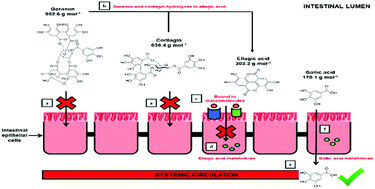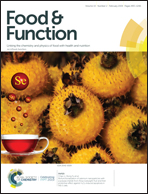Permeability of the ellagitannin geraniin and its metabolites in a human colon adenocarcinoma Caco-2 cell culture model
Abstract
Ellagitannins, found abundantly in berries, pomegranates, walnuts and almonds, have been increasingly investigated for their health benefits. Geraniin (GE), an ellagitannin, found predominantly in herbal plants, as well has been shown to exhibit a number of biological activities. Like many hydrolysable tannins, geraniin is water-soluble and readily undergoes hydrolysis in the presence of hot water, weak acids and weak bases to yield several metabolites including corilagin (CO), ellagic acid (EA) and gallic acid (GA). There are numerous studies on the pharmacological effectiveness of GE, CO and GA. However, the intestinal permeability of GE and CO has never been investigated before. Caco-2 cell transport assay was utilized to evaluate the in vitro permeability of GE and its metabolites. GE, CO and EA were found to have no apparent permeability (Papp) while GA displayed a Papp value of 31.3 ± 1.1 × 10−6 cm s−1. Mass balance studies showed a loss of geraniin and its metabolites during transport. Chemical stability studies in the transport buffers revealed that GE and CO were hydrolyzed in the HBSS buffers. Experiments using lysed cells revealed that GE and its metabolites were metabolized during transport. Absorption and desorption studies confirmed the accumulation of EA inside the cells. The above results indicate that the compounds have poor oral absorption. To consider these compounds or their natural extracts as oral nutraceutical candidates, formulation strategies are mandatory.



 Please wait while we load your content...
Please wait while we load your content...